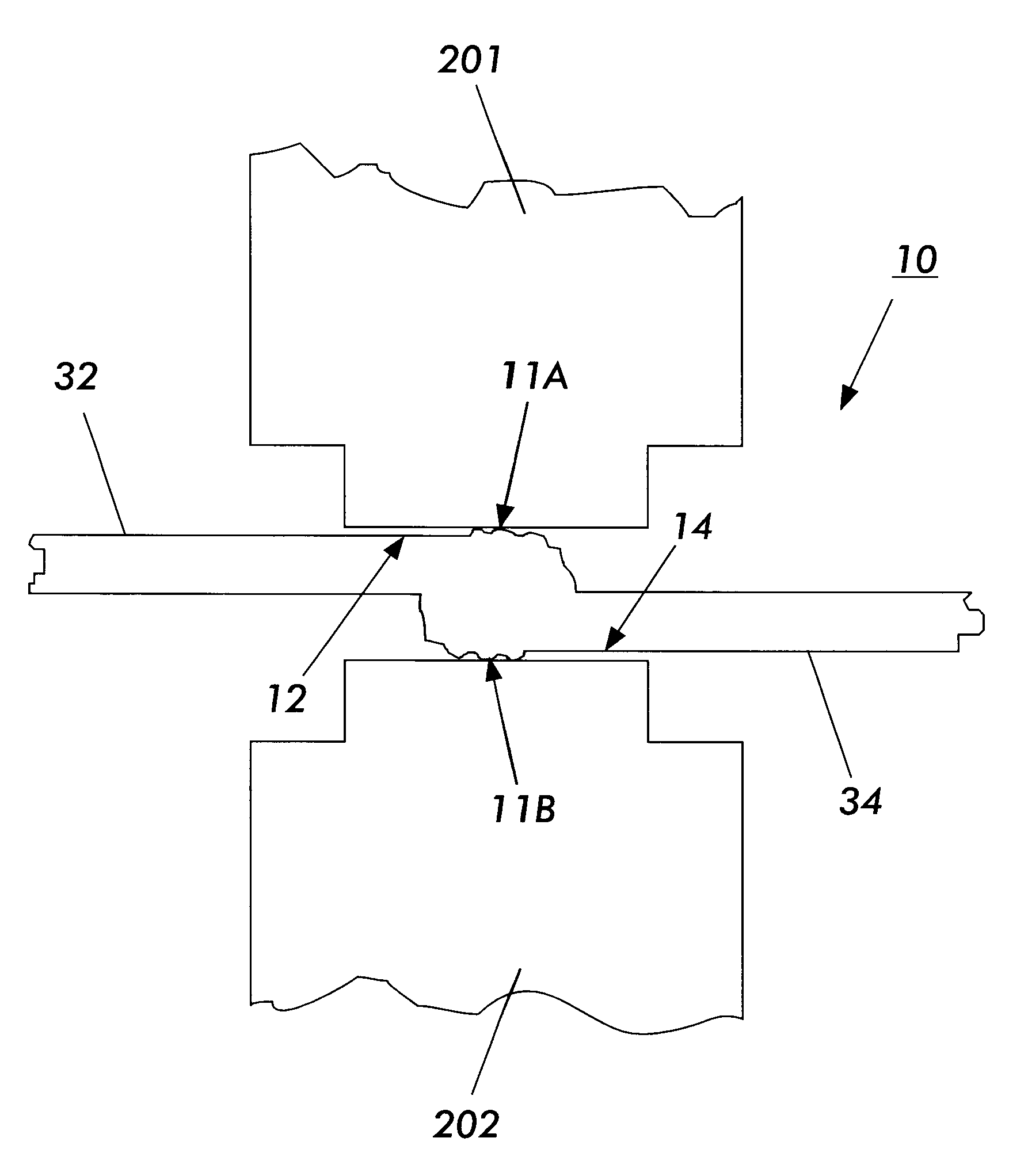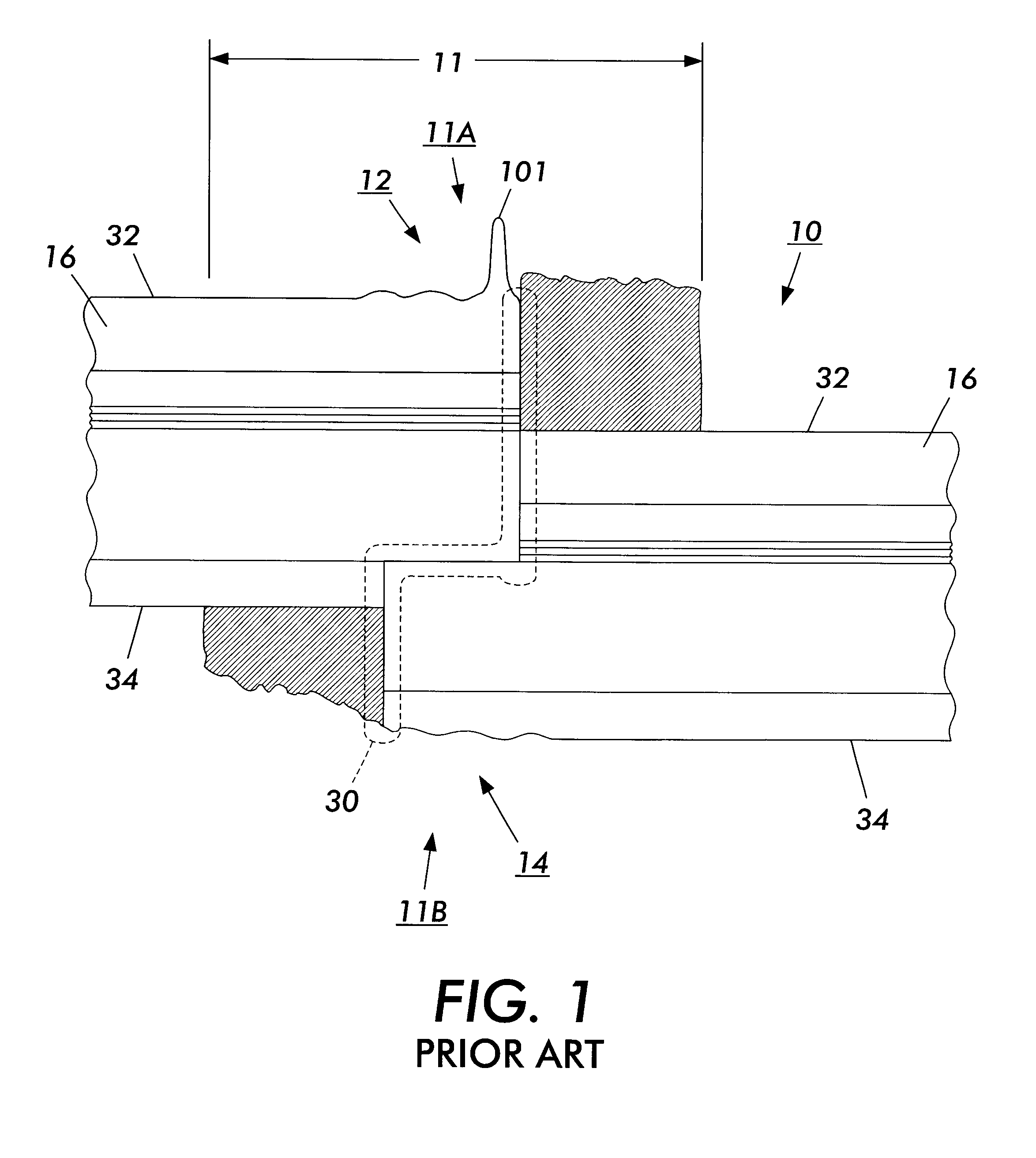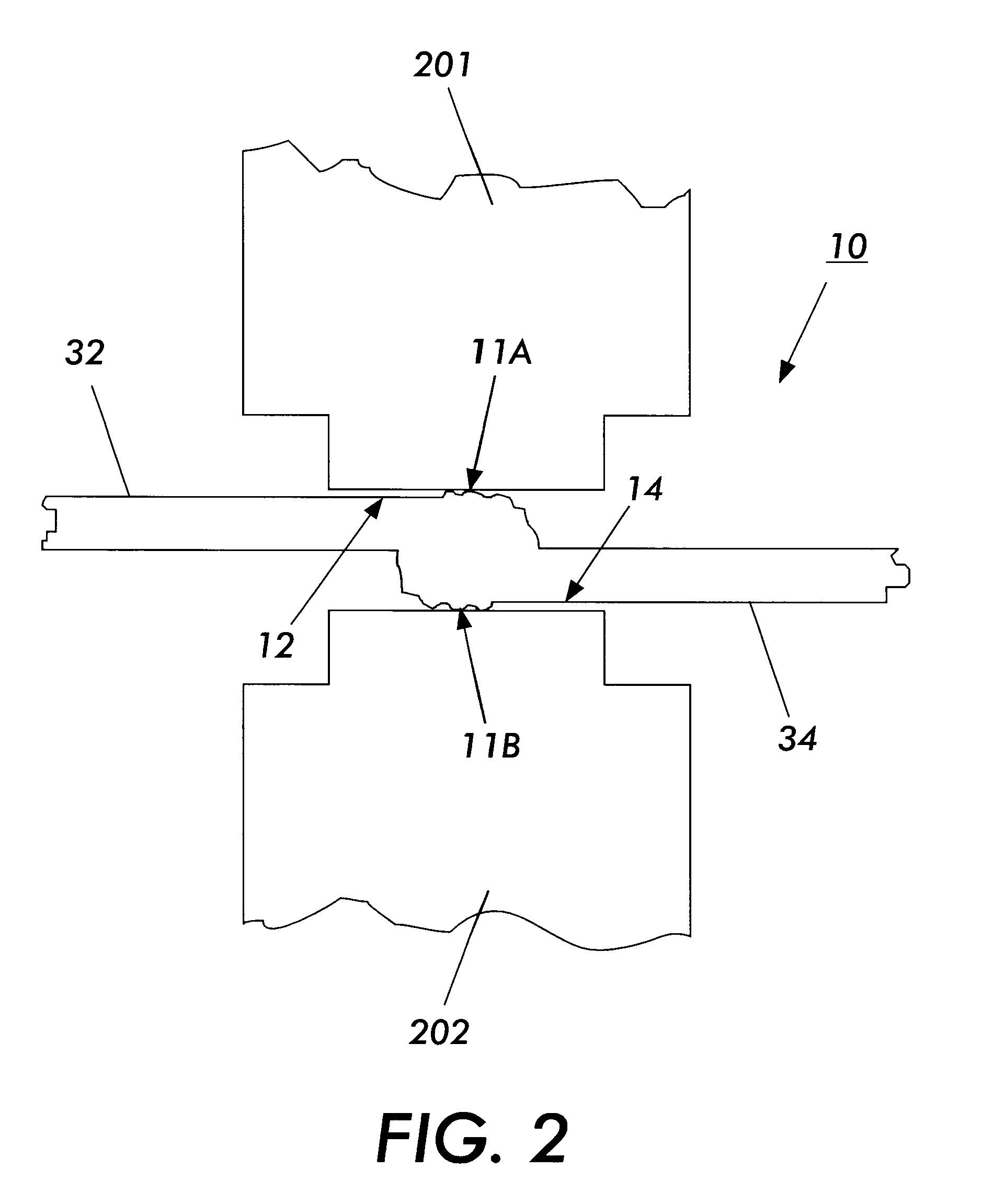Method for reducing surface roughness in a welded seam of an imaging belt
- Summary
- Abstract
- Description
- Claims
- Application Information
AI Technical Summary
Benefits of technology
Problems solved by technology
Method used
Image
Examples
Embodiment Construction
In brief, a process for reducing surface roughness in a welded seam of an imaging belt is provided. In accordance with the present invention, the welded seam is treated by compressing a portion of the belt comprising the welded seam and adjacent belt portions and, while compressing, heating the welded seam to a heating temperature near but less than the glass transition temperature of the imaging layer of the belt, then cooling the welded seam to a cooling temperature. The compressing continues while the heating and cooling steps are repeated until the surface roughness is determined to be satisfactory. The process then ceases.
As used herein, the words "process" and "method" have identical meanings and may be used interchangeably.
Referring now to FIG. 1, there is shown a prior art electrophotographic imaging belt 10 with a first end 12 and a second end 14. The imaging belt 10 is flexible, and includes an outer surface 32 and an inner surface 34. As shown, the first end 12 and the se...
PUM
| Property | Measurement | Unit |
|---|---|---|
| Temperature | aaaaa | aaaaa |
| Temperature | aaaaa | aaaaa |
| Fraction | aaaaa | aaaaa |
Abstract
Description
Claims
Application Information
 Login to view more
Login to view more - R&D Engineer
- R&D Manager
- IP Professional
- Industry Leading Data Capabilities
- Powerful AI technology
- Patent DNA Extraction
Browse by: Latest US Patents, China's latest patents, Technical Efficacy Thesaurus, Application Domain, Technology Topic.
© 2024 PatSnap. All rights reserved.Legal|Privacy policy|Modern Slavery Act Transparency Statement|Sitemap



